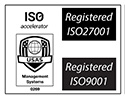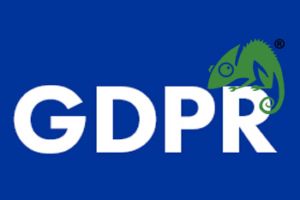2006 Nurburgring Virtual Tour Guide (Pre Street View)
2015
Tomorrow I am flying to Zurich with my good friend Ian to receive the 2014 global award for most creative use of Google Maps API. It’s a great feeling to be recognised by a highly respected company.
The project which won was a huge tour around a football stadium. New ideas and approaches were integrated into a bespoke Tourdash interface. The end result was a unique step forward for Business View and its affiliate software.
It’s pleasing to win an award in virtual technologies because this project kind of connects back to a cool idea I had which was slightly ahead of its time.
2006
In the spring I began documenting the famous Nurburgring Nordschleife with photos and video. Clocking in at 12.9 miles, the track drops and climbs 1000ft through the German Eifel Mountains, it was quite a challenge.
As a fan of all types of media work, I believed my skills could create a fantastic tourist website biased towards multimedia.
Whilst filming video I noticed workers clearing foliage alongside the race track. They explained the circuit was going to be enclosed with 12ft high catch fencing.
This was quite saddening; the Nurburgring was going to lose its unique look and feel. An idea to document the entire circuit with photography and video became a race against time.
A punishing schedule of working for BMW (37hrs Fri, Sat, and Sun) then a 1000 mile round trip to Germany became my life.
To photograph the panoramas I had to be on the track at 5.30am, before the marshals later appeared at 7am. The evening photo sessions were at 8pm after the circuit closed.
During the day the Nurburgring is used as a test track for manufactures then in the evenings it’s open to the public who drive as fast as possible. Standing on the track taking photos wasn’t allowed.
To stay busy during the daylight hours I filmed behind the crash barriers obtaining a huge library of video. Wednesday night was for wearily driving back to England. Soon it was winter so I stopped travelling and began to work on the imagery and videos.
A visual user interface was developed around a large map broken up into accessible sections. Each section was a detailed map with dots would activate movable panoramas. Different icons activated the video footage.
2007
By January the hand stitched panoramas were looking good and the huge video archive was in a usable order.
I had to make more trips in the spring of 2007 for extra footage to fill noticeable gaps, but by late spring the panoramas, the interface and videos were ready to take the next step forward.
Ian Bevis worked on the next stage by coding part of the project together. It was wise to begin with a single section to see how it performed.
Although the technology was at an early stage – we could see the potential for this type of media. In essence, we’d kind of created a basic an alpha version of Street View.
We calculated the cost of hosting the project online. Unfortunately the world was different in 2007, hosting large amounts of media online was expensive and difficult. This meant it was simply not economical to do this type of project at a large scale.
To make matters worse my day job was back to 5 days a week and required a lot more focus. Unfortunately the Nurburgring idea sat idle for few years while life got in the way.
2010
By winter 2010, interest in my day job had dropped to a point where I began tinkering with the Nurburgring idea again. Google Street View and hosting videos on YouTube were part of everyday life.
I developed a simple interface to make use of embedded content then animated the panoramas into video. The whole project up was split up to suit my new plan then everything was then uploaded to YouTube.
2011
So the project was back to its original multimedia website plan. I had created a basic but functional Nurburgring site for fans to browse the track in it’s full historic glory. It made me feel quite proud; it was the most detailed Nurburgring guide on the internet and a piece of memorabilia before the catch fences appeared.
I was new to web design so the nurburgringexplorer website was not quite the masterpiece but it did reignite desires to work on more creative projects. My day job as a process development engineer at BMW paid well – but didn’t give me any creative satisfaction.
2013
In 2013 I made the decision to leave full time work and enter the world of self-employment, using my media skills to earn a living.
Many warned about the risk – but it’s led to a better work/life balance, allowing time to develop new ideas into finished products.
Ian’s S.E.O Company was doing well and he wanted to increase its profile within Google’s services. I was already producing real estate 360 virtual tours so becoming a Google Trusted Photographer seemed a logical step.
After being interviewed by the Business Photos team I passed my tests and began selling tours to local companies.
2014
I was enjoying working on the Business View project and had received a couple of sales plaudits but I was looking for a bigger challenge. My marketing coordinator Asya Dimitrova was very impressed with a tour I produced for Teamworks Karting and put it forward for an award.
The tour of the karting venue was quite complex, I had covered all the facilities and the entire kart track. It was pleasing to be nominated but I knew it possible to achieve more.
Working in an S.E.O office has its advantages because of all Ian’s business contacts. He really is a networking guru. It wasn’t long before Ian and I were at the Wolves Football club explaining how Business View could be of benefit.
To be honest, I’d never set foot in a football stadium so initially the size and complexity of the stadium was a little daunting. Back at the office I thought very hard about how to get started.
It was a logistical nightmare at first but was quite good fun. The people at the stadium were interesting characters who were bemused by this strange man spinning around a tripod all day.
After lots of development and hard work, the end result was an easy to use interface which accessed over 730 different locations around the stadium.
The tour is extremely detailed because I wanted this project to be a showcase for winning new business. It was the first full football stadium on Google Maps.
The fundamental ideas behind the project seem simple to me now, but at the time nobody had thought of them.
Ian added the final touches to the project by coding the final interface into a mirror image of the Wolves website. Throughout the process, his great negotiating skills helped immensely.
2015
Things are looking good for the future; I’ve just completed a full campus tour of Aston University which is much larger than the Wolves tour. This newly developed service offers great marketing opportunities for large venues.
The tour has also attracted clients in a variety of new areas with propositions which are extremely interesting to say the least.
We are not known to stand still and are currently looking at exciting ways to enhance our services even further, when the weather improves testing new ideas will begin.
Looking back at 2006, it was probably the hardest and craziest part of my life but the memories I have are superb. Admittedly, the Nurburgring project didn’t exactly achieve its full potential but it definitely steered my life in a better direction.
I think this awards ceremony in Zurich is going to be a lot of fun…
Written by Adam Langeveld – Chameleon Web Services – Media Production.
In 2006 Nurburgring Virtual Tour (Pre Street View)







 Chameleon have gone the extra mile and are one of the few Google approved companies offering Google Business Photos giving us an advantage over our competition.
Chameleon have gone the extra mile and are one of the few Google approved companies offering Google Business Photos giving us an advantage over our competition.







